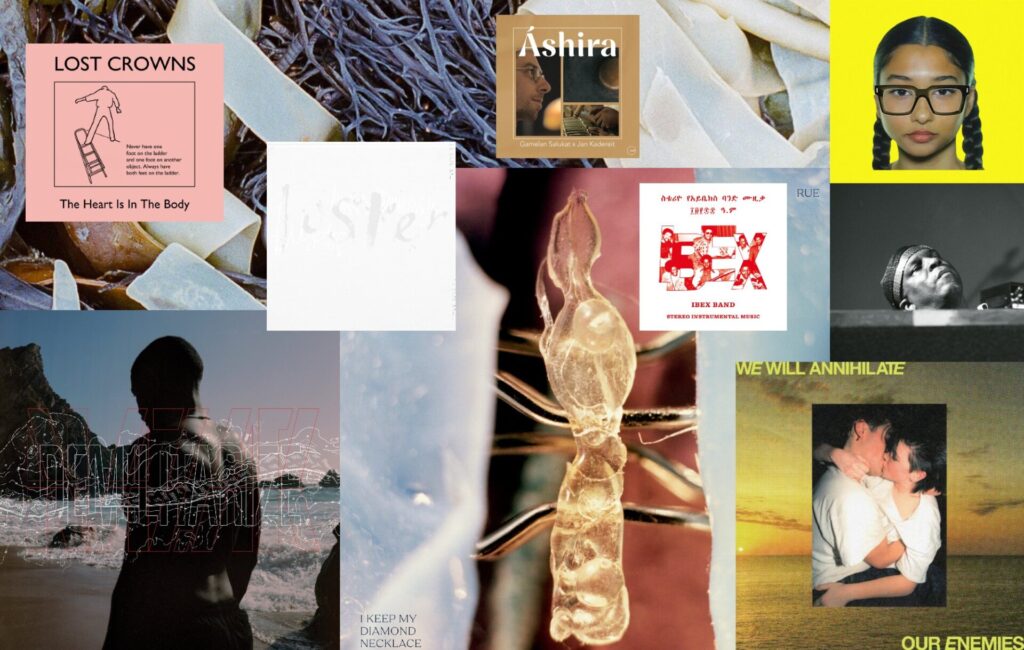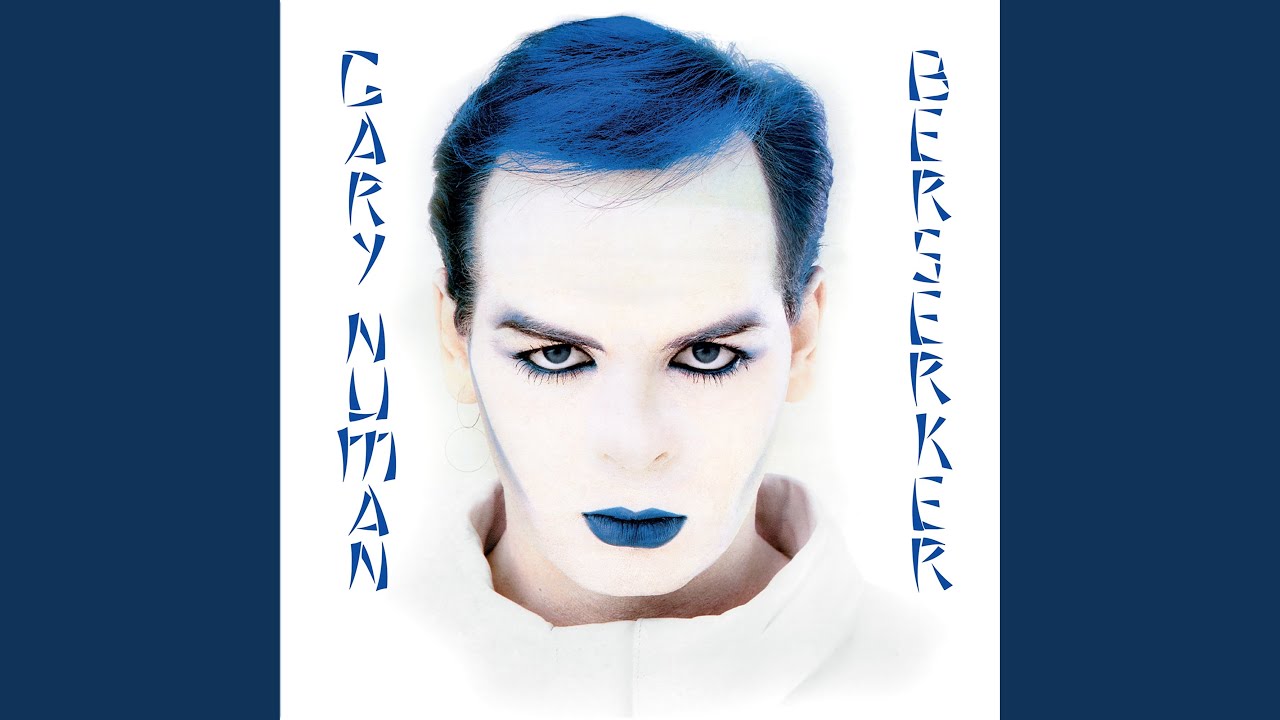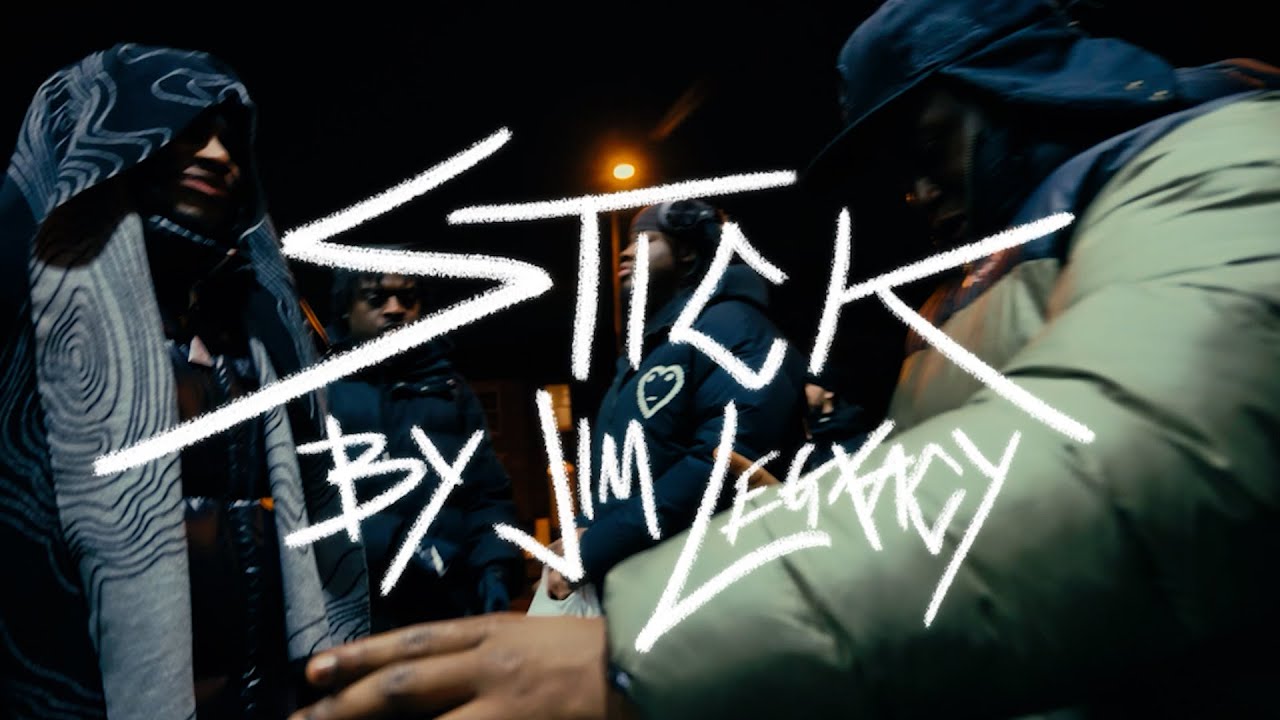I’m penning this introduction to our latest best of the month chart beneath the blazing heat of May Day. It’s a date that I’ve noticed is being marked more and more within the music scene – I’ve had three nights in a row, in fact, of excellent live shows themed in equal parts around the date’s folkloric significance and its symobolism in the fight for workers’ rights that have pulsated with a sense of communal energy.
Though none of the music we’ve rounded up in this list has much, if anything to do with the time of year, nevertheless I feel like I’m engaging with them in the spirit the last week’s instilled in me – of listening to music as an act of genuinely powerful connection.
Everything you’ll find below, as well as all the other excellent music we’ve covered at tQ this month, will also be compiled into an hours-long playlist exclusive to our subscribers. In addition, subscribers can enjoy exclusive music from some of the world’s most forward-thinking artists, regular deep-dive essays, a monthly podcast, specially-curated ‘Organic Intelligence’ guides to under-the-radar international sub-genres, and more.
To sign up for all those benefits, and to help us keep bringing you the kind of music you’re about to read about below, you can click here. Read on below for the best of the best from April 2025.
Maria SomervilleLuster4AD
Luster is (ironically) far more collaborative than 2019’s All My People, Somerville’s self-released first album. She returned to her native Connemara from Dublin in 2020, landing among a community of musicians who helped to build the album’s world, including Lankum’s Ian Lynch and his uilleann pipes. This is a Connemara tugged closer towards the 21st century. Yet the rain still beats and the waves still break. Luster ends with a field recording of coastal surf, as well as an organ that stirs up some deeper, holier flavour of the land. “If you can’t say something new it’s alright,” Somerville sings on ‘Stonefly’, and in an era of genre-less music, it’s nice to hear an album that does one thing and does it well, capturing a landscape so old it never really gets old.
NazarDemilitarizeHyperdub
Where his debut Guerilla dealt in the reality of conflict, Nazar is now inward-bound, allowing himself plenty of room to dream. In a statement on this new record, he explains how “With the album being introspective, I didn’t seek to capture sounds from real places to enhance its universe like on Guerilla. I wanted to make it almost metaphysical, like creating sci-fi.” Tracks have titles like ‘Unlearn’ and ‘Disarm’. An unravelling of what’s known. You can read the music here as a sort of experiment. How can immaculate sound design be used to tackle opaque feeling? But Nazar is not content to rely on tried and tested forms of lo-fi obfuscation. Instead we get murk in high def. Everything on the album is audible but nothing is settled. He has a skilled compositional hand and an ability to shape the shapeless.
Gryphon RueI Keep My Diamond Necklace In A Pond Of Sparkling WaterSelf-Released
Comprised of six patient, ecological engagements and an odd, little coda, Rue’s new LP creaks and grumbles and hums with subterranean and oceanic immensity, singing in voices both animal and botanical. Rue allows long stretches of the album to pass without any, let’s say, overtly human instrumentation, relying instead on field recordings, circulatory system synthesis, instrumentation that could be heard as manipulated field recordings and/or circulatory system synthesis, and flutes that sound like new age weather. When strings do appear, they function as I hope my garden will, creating something of a fantasy or alternate history of the interaction between human beings and nature. These more ‘classically’ musical elements are considered, treading lightly on their surroundings, adding to the compositions but never at the expense of the sonic ecosystems they inhabit.
Ibex BandStereo Instrumental MusicMr Bongo
‘Yezemed Yebada’ (“Of Time, Of Struggle”) carries faint Latin swaying horns, warming a quiet room at dawn. While ‘Yene F’qr’ (“My Love”) moves like a gentle breeze beneath the African sun: soft, tender, and comforting. It doesn’t call attention to itself. It simply arrives. And it lingers close, steady, full of feeling. On ‘Skaysi Y’ke’al’yu’, which loosely evokes the idea of release from suffering, saxophonists Tedros Mitiku and Fekadu Amdemeskel lift the track into something like levitation. This isn’t mourning; it’s transcendence. And then there’s ‘Asa’belashalehu’, a lullaby of sorts. Not one whose intent is to put you to sleep, but one that stirs something deeper. The phrase translates as “I offered you the gift of the sea.” It’s calm, nourishing, elemental. Like being held. Like being remembered.
Lost CrownsThe Heart Is In The BodySelf-Released
There’s a fine line between originality and simply being wilfully awkward, but equally a ‘pretty melody’ will not be exactly the same for all sets of ears. There is too, the kind of ugly beauty exemplified by Trout Mask Replica, which perhaps sidesteps the issue of being too academic in its construction by virtue of its radically ‘primitive’ compositional technique – an untrained composer creating on an unfamiliar instrument. Lost Crowns tread this fine line with aplomb, and the symphonically rendered chaos of their tightly scripted tunes transcends being simply intellectually interesting with a visceral dynamism usually absent from such complex music. My favourite new release of the year so far.
Gamelan Salukat, Jan KadereitÁshiraOne World
Gamelan Salukat is a gamelan formed by composer Dewa Alit in 2007, which has a unique set of instruments designed by Alit specifically so that the group could perform his boundary-pushing gamelan compositions. It’s what sits at the root of this fresh, future-sounding album by Jan Kadereit and the gamelan. There are crisp rushes of sound; bells in impossible high def; tumbling waterfalls that ring in slow motion, the patterns of falling water revealed as if by slow-mo camera. The opener is a stunner, crisp twittering repetitions of high pitches that give way to crashing percussion. It’s like no other gamelan album I’ve heard. Alit’s work is the closest comparison, for obvious reasons, but there is a totally different sensibility powering each composer’s sound on this instrument.
Bb Trickz80’zSony
80’z is like a joyously chaotic disco shift at the club, opening with ‘Tipz & Trickz’ which has bouncy, fast-flowing verses that sit atop jangly guitar lines reminiscent of the sounds of West African highlife. It flows into ‘Superchú!’, which features more of Bb’s characteristically drill vibe in its beats and rhythm. The track playfully mixes Bb’s Spanish lyricism with phrases in English to create a kind of Spanglish that both seems nonchalant and uniquely hers. We get this on ‘Not a Pretty Girl’ too, which sees Bb put her spin on Clairo’s 2017 breakout single ‘Pretty Girl’, coupling its laid-back instrumental with her brash delivery, confirming that she’s not one to be trifled with.
LullahushIthacaFuture Classic
Ithaca includes versions of several Irish folk standards, all sounding as they have never done before. The album opens with the cry of a curlew and the ethereal voice of Saileog Ní Cheannabháin (of Sean-nós) singing ‘An Droighneán Donn’ (‘The Blackthorn Bush’), a much-loved Irish song. Her voice emanates from what sounds like a long-buried tape, full of echo and delay, accompanied by a rising storm of what could be glitches, or beats detached from their moorings. The curlew, however, sings as clear as a bell. The track makes quite a statement about McIntyre’s take on Irish romantic culture, heard through a distorted wash of modern electronica. It is the sound of living music, writhing and transforming as we listen.
Real LiesWe Will Annihilate Our EnemiesTonal
Tracks like ‘I Choose You’, ‘Loverboy’ and ‘Wild Sign’ teeter on club classics territory. The quirky, upbeat ‘Toward Horses’ is part Hot Chip homage, part Basement Jaxx bounce. You’re then yanked back from the dancefloor by the sprawling cinematic soundscape of ‘WWAEO’, which feels like digging your toes into the sand as strong waves rush over your feet. It’s an ode to brotherhood, with King’s synth pad swells and bit-crushed ride bell resembling a slow-motion trip. On ‘Down & Out’ and ‘I Could Join The Birds’, Kharsas delivers in his definitive half-sung style, poetically reflecting once more on the everlasting yearn for freedom and rapture of London’s party scene. The heartfelt hook on ‘ICJTB’ evokes Roland Orzabal’s iconic baritone when Tears For Fears made a protest song that one time.
Gary NumanBeserker (Reissue)Numan Music
In truth, the songs on Berserker are melodically the strongest since The Pleasure Principle, even if conceptually everything is clearly a lot more nebulous. The cover art signals rebirth, though before he can shape the narrative he appears to have been struck down with a dose of nihilism, becoming bereft of the energy needed to join the dots. Numan is suddenly weighed down by the futility of it all on tracks like ‘My Dying Machine’ where – giving himself the opportunity to speak truth to power – he asks, despairingly: “Why give orders? And why make speeches? Give me a reason to die.” On ‘This Is New Love’ – a title which suggests we might be in for something more upbeat – he sounds positively desolate: “Cold fascination / With dead sound / Oh God let me sleep”.
Sun RaNuits De La Fondation Maeght (Reissue)Strut
Since relocating to New York at the beginning of the 1960s, Ra et al had weathered times of extreme poverty and lack of opportunity, while clinging to an uncompromising vision of music’s liberating potential. These debut European shows heralded the beginning of a new and long-overdue era of greater visibility, renown and respect which – as for so many of the eternal avatars of jazz – were more readily available across the Atlantic than they were at home in the States. The Arkestra in 1970 was not only at the height of its powers, it was also the first true incarnation of the much-loved, globe-trotting Arkestra that Marshall Allen has led so successfully into the 21st century. It all starts here.
TRACKS
Matmos‘Changing States’Thrill Jockey
Misters Daniel and Schmidt pay tribute to a dearly missed pal, Susan Alcorn, whose pedal steel is featured front and centre on ‘Changing States’ the lead track from new album Metallic Life. While the broadest brushstrokes are familiar – songs, initially, are built up sculpturally from sound sources which adhere carefully to a specific concept, this time, that of metal objects – Matmos continue to cast wonderful new sonic objects. Their kit on this track alone includes a knife, a trowel, a screw, tuning forks, a panettone box, aluminium rods and tread plates plus metal bowls and a pulse box xylophone. So, anticipation is already mounting for side two of the LP which was apparently recorded live in the studio; probably making it more like Heathen Earth than Matmos Comes Alive.
Lana Del Rey‘Henry, Come On’Interscope / Polydor
Lana Del Rey has long been promising to go full country mode for some time now having teased covers of various classics of the genre in live shows in recent years, and announced early in 2024 that she would be exploring the sound further for her next LP. That album, having now undergone two title changes and various release date changes, remains unreleased but ‘Henry, Come On’ is a fine introduction to it. Awash with her usual engrossing Americana touches, it’s a sweeping piece of pop music that tells the parting tale of the titular Henry and his cowgirl.
Sarah Register‘Right’smartdumb
NYC musician and mastering engineer Sarah Register is one third of Better Corners and was a vital presence on Kim Gordon’s recent (excellent) The Collective as a guitarist. While this kind of CV plus plaudits from Yeah Yeah Yeahs and Lydia Lunch might give you a broad sense of texture and energy it really won’t prepare you fully for the unusual and enticing concrète drill of ‘Right’.
Pami‘Kiss Me Blue’Juicey
There is a lightness to the music of Thai singer Pamiga Sooksawee, a hazy, brumous, weightlessness, like words written in steam. ‘Kiss Me Blue’ is like Japanese City Pop re-written for people extremely high or moonily listless. It could be on the soundtrack to The Virgin Suicides. It could be in an ad for a gum the flavour of dandelion clocks.
The Hidden Cameras‘How Do You Love?’ (Pet Shop Boys remix)EvilEvil
The brilliance with the early music from The Hidden Cameras was how they imbued their graceful multi-instrumentalism with oomph and sleaze in a way that is rarely encountered from indie musicians of the North American continental landmass. After nearly ten years away since the country-tinged Home On Native Land, Joel Gibb has taken a refreshing new electronic tint (perhaps inspired by his new home of Berlin) with the pulsing disco minimalism of new single ‘How Do You Love?’. It comes with an absolutely killer remix by the Pet Shop Boys, a perfect meeting place of both artists’ understated romance and raunch. More to come from The Hidden Cameras later this year.
Jim Legxacy‘Stick’XL Recordings
Jim Legxacy’s forthcoming mixtape debut for XL Recordings, Black British Music (2025), is currently my most anticipated project of 2025, and preview tracks like ‘Stick’ only make my expectations for it grow larger. Built around a gloriously catchy sample-based chorus, characteristically tough beat and typically fun lines about “sellin’ Charli to the brats”, it’s been on heavy rotation since its release.









